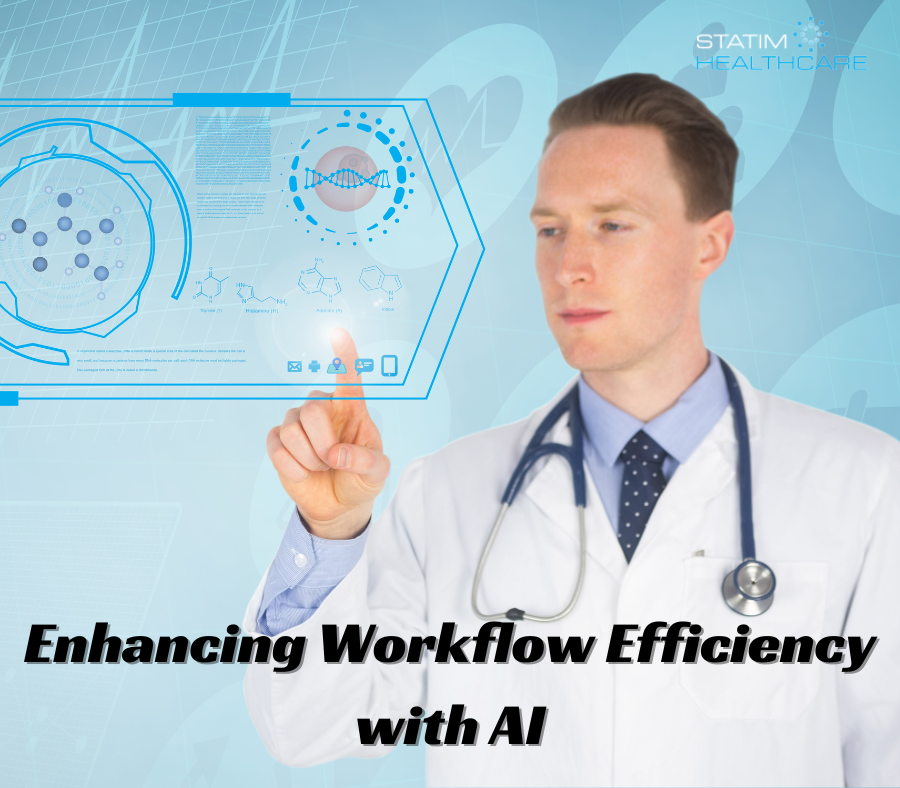In the dynamic landscape of radiology and diagnostic imaging, optimizing workflow has become a cornerstone of providing efficient and accurate healthcare services. Leveraging Artificial Intelligence (AI) in radiology processes has emerged as a transformative solution, revolutionizing the way professionals approach diagnostics.
In the realm of radiology and diagnostic imaging, the integration of AI has proven to be a game-changer. AI algorithms, backed by deep learning and machine intelligence, are designed to analyze vast amounts of medical data swiftly and with unparalleled accuracy. This not only expedites the diagnostic process but also enhances the precision of results, ultimately leading to improved patient care.
Examination Planning and Ordering Studies
Because of the EHR’s ever-growing amount of data, a radiologist can find it difficult to combine all of the patient information into a customized imaging plan. This is where leveraging AI’s quick information scanning and intelligent plan generation depending on the clinical indication of the patient may be helpful. By expediting the ordering procedure for investigations, AI can reduce the number of unnecessary scans.
The radiologist’s time would be better spent on patient-facing duties such as informing the patient about the examination or treatment, getting informed consent, and answering questions and concerns that could improve patient satisfaction.
“Machine learning” is a subfield of artificial intelligence based on the idea that algorithms get more accurate with time through the use of data and experience. The kind of data the algorithm is exposed to and its experience can have an impact on its problem-solving capabilities even when it is not explicitly planned. Machine learning can advance AI to the point where it can accurately predict the diagnosis based only on the clinical indications and information gathered in the EHR, potentially negating the necessity for imaging tests.
Streamlining Diagnostics for Enhanced Efficiency
One of the key advantages of incorporating AI into radiology workflows is the streamlining of diagnostic procedures. AI algorithms can quickly analyze medical images, detect anomalies, and highlight potential areas of concern. This significantly reduces the time required for diagnosis, allowing healthcare professionals to focus more on interpreting results and developing tailored treatment plans.
Enhanced Accuracy for Informed Decision-Making
The top diagnostic imaging services harness the capabilities of AI to enhance accuracy in readings and interpretations. AI algorithms learn from vast datasets, refining their diagnostic abilities over time. This continual learning process contributes to more precise and reliable results, empowering radiologists to make informed decisions about patient care.
Improving Patient Outcomes
Best radiology diagnostic imaging services prioritize patient outcomes, and AI plays a pivotal role in achieving this goal. The swift and accurate analysis of medical images ensures timely interventions and treatment strategies. This, in turn, contributes to better patient outcomes, improved prognosis, and an overall positive impact on healthcare delivery.
Efficiency in Reporting with AI Assistance
AI not only aids in image analysis but also significantly improves the efficiency of reporting. Automated reporting systems powered by AI can generate comprehensive reports quickly and accurately. This not only reduces the burden on radiologists but also ensures that healthcare providers receive timely and detailed information to guide patient care decisions.
The Future of Radiology Services
In navigating the dynamic healthcare landscape, the integration of Artificial Intelligence (AI) into radiology services is a transformative force. The commitment to top-notch diagnostic imaging services in the USA propels providers to lead in technological advancements. AI promises continuous improvements in workflow efficiency, diagnostic accuracy, and patient-centric care, setting new standards for healthcare delivery. Its impact extends beyond technology, embracing a paradigm shift towards patient-centric care, streamlining processes, reducing waiting times, and fostering an environment where patient needs are anticipated proactively. As AI unfolds its transformative capabilities, the future of radiology services stands as a commitment to unparalleled care, diagnostic precision, and a healthier, technologically-driven tomorrow.
Conclusion
The incorporation of AI into radiology workflows marks a paradigm shift in the way healthcare services are delivered. At Statim Healthcare, we recognize the transformative power of AI in enhancing workflow efficiency, accuracy, and patient outcomes. As we continue to uphold our commitment to delivering the best radiology services in USA, we embrace the potential of AI to redefine the standards of diagnostic imaging.
At Statim Healthcare, we stand as a beacon of innovation in radiology reporting and teleradiology services. Our commitment to excellence is reflected in the seamless integration of AI into our systems, ensuring that our radiology services are not just efficient but also at the forefront of technological advancements. With a focus on accuracy, speed, and patient-centric care, Statim Healthcare continues to set the benchmark for top-tier diagnostic imaging services in the USA.

